The Spectrum Apparel
October 5, 2016
Clothing communicates a lot about the individual who wears it: personal style, political affiliation, favorite bands, a preference for wool over fleece or stripes instead of dots.
What if, in addition to this list, clothing could convey something more meaningful–such as recognition of the broad spectrum of sexual orientation and gender identity?
Senior McCall Calhoun aims to provide that possibility through her clothing project the Spectrum Apparel, which launched this summer. The apparel includes hats, t-shirts and tank tops that feature designs inspired by LGBTQ life. The images, which include pop culture references and the brand’s rainbow spectrum logo, are intended to both challenge the dominance of heteronormative images and promote understanding of gender and sexuality as existing on a fluid, non-binary spectrum.
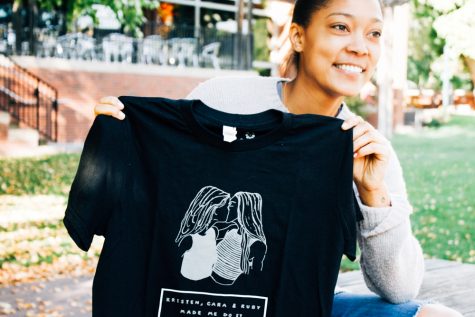
In the beginning: Kristen, Cara & Ruby
Although Calhoun had no intentions of creating a clothing line at the time, The Spectrum Apparel began to take shape in a screen printing class Calhoun took while abroad in Vienna last fall.
For class, Calhoun created a design called “Brainwashed.” It depicts two women kissing above a placard that reads “Kristen, Cara & Ruby made me do it.” The names refer to three queer female celebrities with a large following in the LGBTQ community, while the design’s name takes a light-hearted jab at the age-old misconception that people (or experiences or music or clothing) can cause someone to become gay.
Upon returning home for winter break, Calhoun gave sweatshirts screen-printed with the “Brainwashed” design as gifts to friends.
“People really loved them,” Calhoun said.
One of Calhoun’s friends from Whitman wore her “Brainwashed” sweatshirt every day for two weeks without washing it for fear the design might come off.
Although Calhoun paints and draws, working with clothing was completely new to her.
“I’ve never been into fashion further than just what I like to wear or noticing what other people wear,” Calhoun said. “So [The Spectrum Apparel] was mainly driven by designs.”
Gay all day, every day
Calhoun, who identifies as on the gayer side of the spectrum, mentioned the frustration she felt throughout her life by the lack of clothing with non-heteronormative images.
“It was always exciting the few times where I would be able to find a clothing or a shirt with an image that’s like ‘Oh that’s kind of gay; I’m gonna wear that,’” Calhoun said.

When companies offer overtly LGBTQ clothing, it is usually marketed as a limited time collection or novelty item. By offering basic, everyday items like t-shirts and hats that feature LGBTQ-related images, The Spectrum Apparel upends this treatment of queer clothing as novelty. Sexuality and gender identity, after all, are not limited time offers.
Sophomore Brendan Dunlap, who models for The Spectrum Apparel and identifies as gay, considers The Spectrum Apparel’s grounding in LGBTQ life one of its most appealing aspects.
“For someone who…really tries to explore different brands and different genres of clothing, it’s exciting to see something that is not just a one time collection or a special edition, but it’s at the root of the company,” Dunlap said.
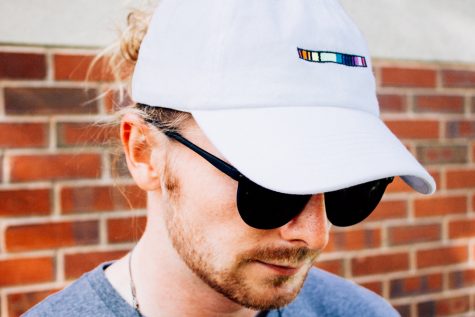
Senior Zach Hartzell, who identifies as part of the queer community, also models for The Spectrum Apparel. According to Hartzell, Spectrum clothing provides an outlet of expression for LGBTQ people.
“Individuals that are part of the queer community oftentimes grow up with this notion that a lot of the feelings they have need to be contained–even in a place like California or San Francisco,” Hartzell said.
“So being able to (quote on quote) ‘wear [your identity] on your sleeve’ or on your head or on your body or in any other way is a very liberating and empowering activity,” Hartzell added.
Not just ‘that gay clothing store’: mainstreaming tolerance
Calhoun views The Spectrum Apparel as part of the movement to promote not just progressive understandings of gender and sexuality, but a more open-minded way of considering everything.
“What I want to see…is mainstreaming this notion of acceptance and that people are individuals and…complex,” Calhoun said.
Calhoun emphasized that conveying the individual complexity of a person involves not just celebrating one’s sexuality or gender identity, but also refraining from reducing that person to their place on the spectrum. Calhoun spoke about her own sexuality by way of example.
“Right now my sexuality is not a central part of who I am. I like to think that there are many other things and it’s just like, ‘Oh yes, this is how I think of people and this is who I’m attracted to,’” Calhoun said.
Similarly, Calhoun does not want her clothing line’s roots in LGBTQ-themed images to become its sole identity.
“With regards to the actual clothing and the business side of it, I do not want [The Spectrum Apparel] to be this specialty, novelty store or concept,” Calhoun said.
She continued, “It’s still about the LGBTQ mainstreaming, but people aren’t like, ‘Oh my god, this is that gay clothing store.’”
Who’s it for?
Calhoun and models Dunlap, Hartzell and Sabina Rogers agreed that although the clothing is directed toward an LGBTQ audience, everyone can wear it.
“I don’t think the purpose of the clothing is to label yourself as being LGBTQ but rather a celebration which…everyone on any end of any spectrum should be a part of if they want to be,” Dunlap said.
Dunlap bought a bunch of The Spectrum Apparel items for his friends at home who are not part of the queer community.
“They love the products, and they love the message that it’s sending,” Dunlap said.
Rogers, who started modeling for The Spectrum Apparel a few weeks ago, explained that for her, wearing The Spectrum Apparel is a way to make connections with people across the range of sexual orientation and gender identity.

“As someone who is more on the heterosexual side of the spectrum, but definitely still on the spectrum, it’s a cool way to connect with people who are varied across the spectrum. ‘Cause we’re all on a frickin’ spectrum, you know?” Rogers said. “For me it’s less of marking yourself on a spectrum, and more of the acknowledgement that there is a spectrum and that everyone is on it.”
Calhoun considers the broad range of identities among those who wear the clothing one of its most powerful tools of communication. When people who identify across the spectrum wear Spectrum clothing, it further kindles the conversation about the complexity of human identity.
“Hopefully, what I like to think what’s going on, is there’s a spark in someone else’s head going, ‘Oh, interesting,’” Calhoun said.
Meaning: more than skin deep
When I spoke to Hartzell, he wore two of his favorite pieces of Spectrum clothing–the “Boys Gone Wild” T-shirt and a pink baseball cap with Spectrum Apparel’s rainbow spectrum logo.
“I have a couple other of [Calhoun’s] designs but for some reason these two just kind of speak to me just in terms of my own personal style and my own identity. And I think I’m kind of still trying to figure out what each of them mean to me, and they change every single day,” Hartzell said.
Hartzell’s changing understanding of the clothing highlights the space they create for individual expression.
“It can very much become each individual’s own symbol to speak for themselves,” Hartzell said.
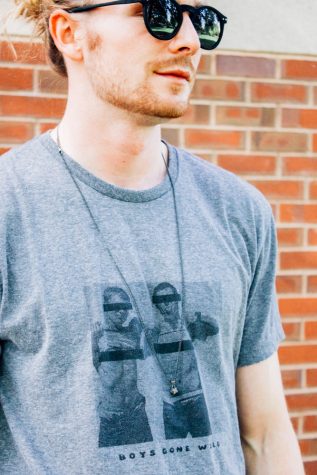
One of Dunlap’s favorite designs is a play on the title of a popular album, “If You’re Reading This It’s Too Late,” by R&B artist Drake. The Spectrum Apparel design reads “If you’re reading this I’m gay.”
“It kind of takes something that was super popular and still is, this Drake quote…and then kind of manipulates it into a way to express our own identities,” Dunlap said.
Dunlap continued, “I love to have fun with fashion and try different things…so for me to be able to wear something that is not only visually pleasing but also represents an identity is really exciting for me.”
Hartzell believes Spectrum clothing provides an opportunity for the queer community at Whitman to increase its visibility on campus, which he, Calhoun and some other individuals have worked hard to improve.
“Although we’re a very accepting group of students, we’re still working on [increasing visibility], and I think people are still looking for a more overt queer community among the Whitman student body,” Hartzell said.
By openly recognizing queer identities, Spectrum clothing is a path to increased engagement with the campus as a whole.
“Not only can the clothing help us find one another, but they also are acknowledgements that we’re here, we’re stylish and we’re ready to have a good time,” Hartzell said.
The road ahead
While the Spectrum Apparel has existed for only a few short months, the enthusiastic responses to the project are encouraging.
According to Dunlap, people’s reactions are always positive when he wears Spectrum clothing.
“People continuously ask me what the brand is, especially when I’m wearing this shirt; people love this shirt,” Dunlap said, referring to his “Boys Gone Wild” T-shirt.
Hartzell explained that people compliment the clothing when he wears it, but it has taken more effort to communicate that Calhoun designed it and that the clothing is centered around an LGBTQ community.
“Now I think the momentum has started to build around the fact that this is not only a Whitman student, but a Whitman student with a goal and message to put out there,” Hartzell said.
Calhoun holds high aspirations for her clothing as a force for positive change.
“My hope is just this mainstreaming of…basic human decency,” Calhoun said.
If business continues to expand, eventually Calhoun would like to donate a percentage of the proceeds to groups that support LGBTQ youth in the struggles they endure.
Dunlap hopes The Spectrum Apparel’s message of human equality will inspire other clothing providers.
“It’s definitely made me hopeful that other people will follow suit and continue doing similar things in the future, and continue making these really amazing products that we can be proud to wear,” Dunlap said.
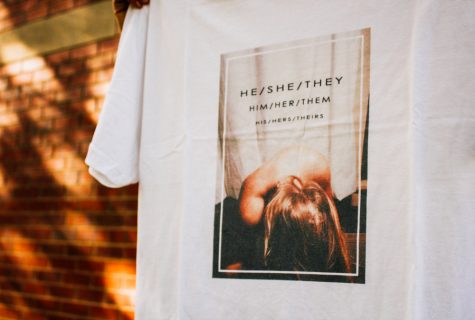

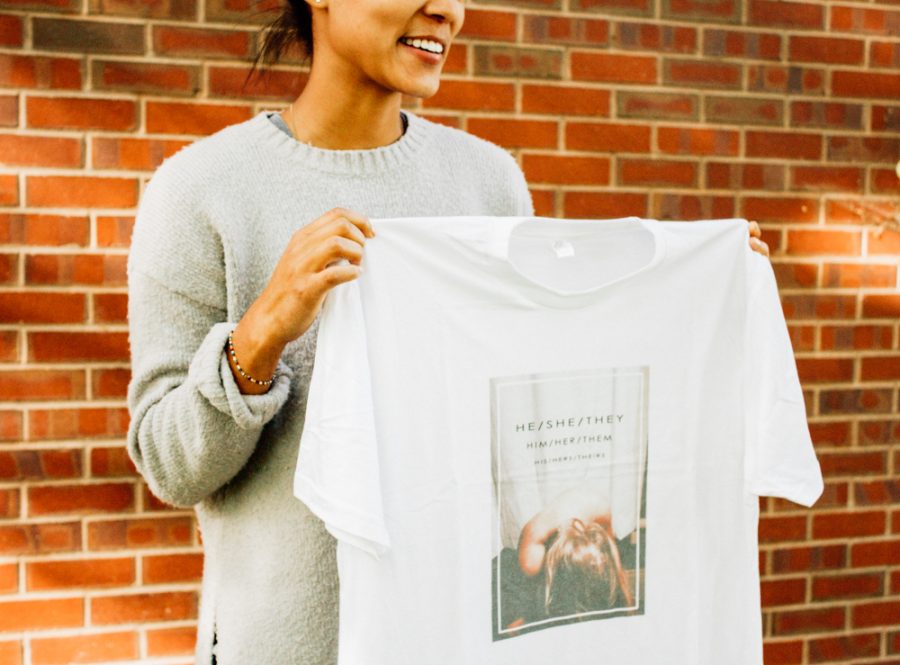




Gladys Aquino • Oct 5, 2016 at 2:43 pm
Although I am not a student, I hope it’s ok to post here.
You sent Billy a great hat and I have been wearing it. In fact, I wore it in my TRX class and a fellow next to me commented on the design. He wanted to know where I got it. I told him all about you.
Then, he told me he’s new in town and asked if I go to any gay clubs/meetings…I told him that I didn’t but that I could put him in touch with people who do. He thanked me and we continued with class.
I was elated for you my girl.
Love you forever. Come and visit us when you are home.